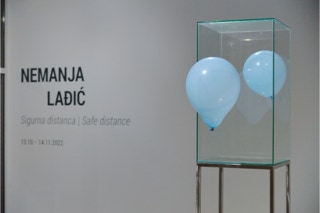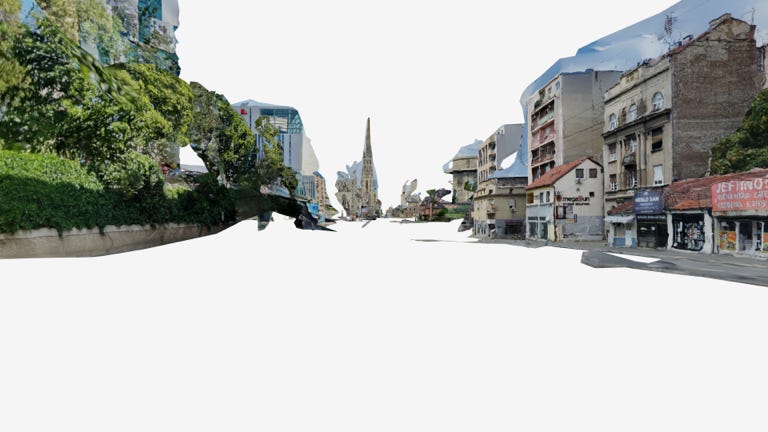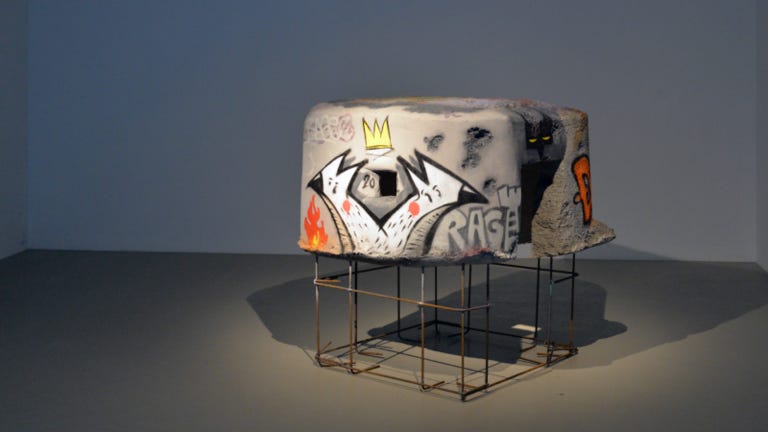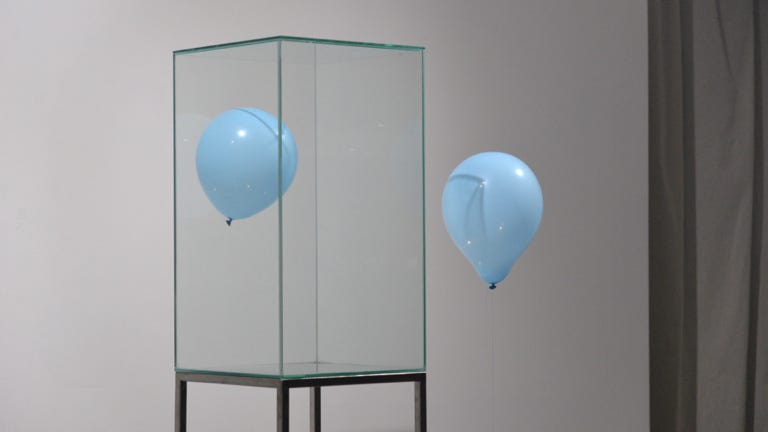Nemanja Ladić in his works, individual video installations and wider formats at the level of immersive exhibition situations, explores the impact of means of contemporary communication on our physical, perceptual processes as well as psychological, access experiences. The exhibition in the MoCA Salon entitled "Safe Distance" is offered as an expanded, materialised analysis of the representative role of the virtual image, i.e. the character of virtual reality. The exhibition is presented as a unique narrative composed of three parts, physically separate but connected units. Although technically and perceptually different, the spatial entities are connected linearly, thus examining perception and perceptibility through the level of imagination, the space formed in cyberspace, what surrounds us virtually and what is imposed on us realistically in the environment. The six-channel video installation as the central part of the exhibition simulates the form of the street, which consists of a collection of moments, places and atmospheres like a personal travelogue in which all elements are composed at the level of intersection of the real and the merely experienced. Together with two sculptural installations in the space, as the beginning and end of the "narrative", the work constitutes a symbolic study of the evolution of the manifestation of virtual spaces, looking at the different forms of materiality in relation to the immaterial space, thus examining the wider meaning and experiential experience of images and scenes in today's digital world communication.
The name of the exhibition "Safe Distance" refers symbolically in space in-between obtained in the distance/difference that exists between the actions of the body and the senses in a real situation and their complete immersion in the constructed world of virtual reality. With this exhibition, Lađić decides to present a phenomenological overview of different levels of perception of the recipient in relation to the known/existing and constructed. This creates an interesting complication in relation to his earlier works and visual research in such a way that metaphorically this could also be an exhibition about the perception of exhibitions or artworks of different media. If the basis of reflection here is perception, then viewing an exhibition where objects are present is different from the perception of the receiver of digital art, especially VR. With the digital image, the work of art has become a process and not a specific object, so the perception of the recipient could be seen as a special process of art. The relationship between reality and the digital world (which can be immersive at the level of images and content, be it advertising, marketing, communication, or entertainment) has become more important and as such has become the new normal. This changed the relationship of human action within the new visual and communication agenda. We are familiar with the logic of the action of physical things around us, including those that arise in the domain of "representation", “imitation'. "reproduction", however, new cyberspaces offer a new logic of events in which is hidden the idea of reviving realism to the extent that it produces immersion, a kind of deep illusion. The material objects and the view of the virtual, their individual and mutual perception that Lađić presents to us in this exhibition do not speak so much about themselves, but about us in the position of the observer, our approach and behaviour in relation to the given interface…
Una Popović
Related works:
Stroll
2022
The Bunker
2022
The Same Thing
2022












